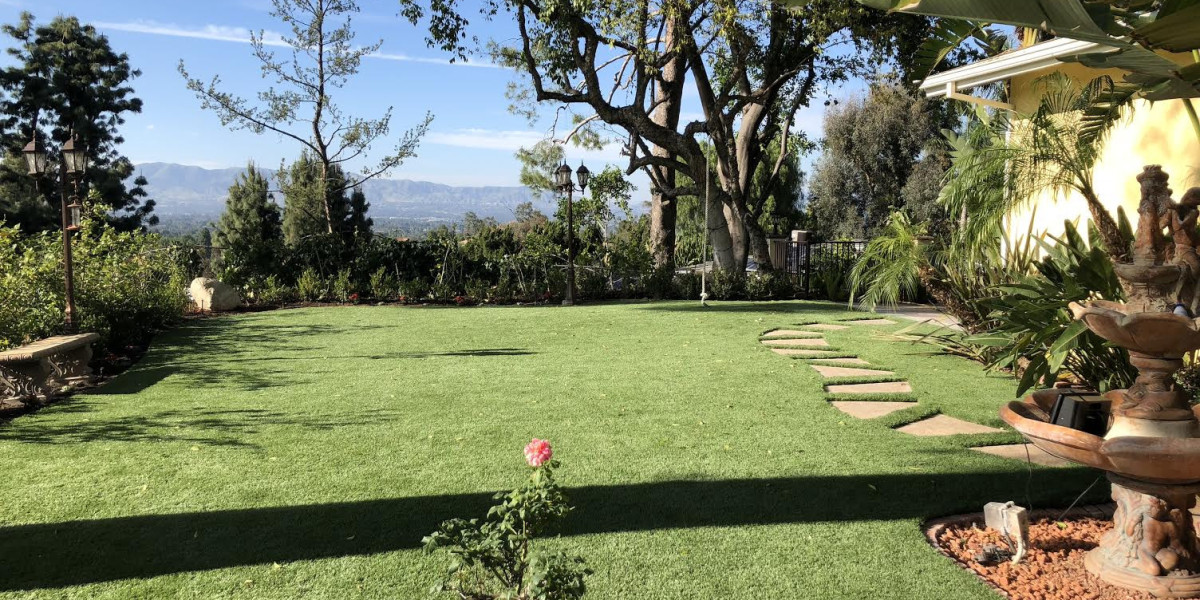From local school playgrounds to world-class stadiums, artificial grass is transforming the way sports are played—and maintained—across the globe. Once seen as a niche alternative to natural turf, artificial grass has become a go-to choice for sports organizations seeking durability, performance, and sustainability. Its impact is not only improving game-day experiences but also reshaping the economics and logistics of field maintenance.
With innovation in materials, design, and installation techniques, artificial turf has evolved into a reliable surface suitable for various sports—from football and soccer to baseball, rugby, field hockey, and even golf. In this article, we explore how artificial grass is changing the face of athletic fields worldwide—and why this shift is here to stay.
1. The Evolution of Artificial Sports Turf
Artificial grass made its debut on sports fields in the 1960s, most notably at the Houston Astrodome, with the now-famous AstroTurf. While the early versions had their drawbacks—being hard, unforgiving, and visually unconvincing—technology has come a long way.
Modern artificial grass features soft, realistic-looking fibers, advanced infill materials, and shock-absorbing base layers that replicate the feel and performance of natural turf. These innovations not only reduce injury risks but also enhance playability. Today’s synthetic sports turf supports consistent ball behavior, solid traction, and optimal cushioning—making it a preferred surface for many professional and amateur teams alike.
2. All-Weather Reliability
One of the most significant advantages of artificial grass in sports is its all-weather reliability. Unlike natural grass, which can become muddy, patchy, or even unusable after heavy rain or extreme heat, artificial turf remains intact and playable under nearly all weather conditions.
This allows games and practices to proceed on schedule—critical for schools, leagues, and sports complexes with tight timelines and high usage. For professional sports organizations, this reliability reduces the chances of costly delays or cancellations, helping protect revenue and fan experience.
3. Increased Usage and Scheduling Flexibility
Natural grass fields need time to recover between events to prevent wear and tear. Heavy foot traffic, repeated play, and weather exposure can quickly damage a real grass surface, requiring rest periods and significant maintenance. Artificial grass, on the other hand, can handle back-to-back events with minimal downtime.
This increased scheduling flexibility means more games, more training sessions, and ultimately, better returns on investment for sports facilities. Fields can be used year-round without worry about overuse, which is especially beneficial for urban or school-based sports facilities where space is limited.
4. Lower Maintenance, Higher Efficiency
Maintaining a pristine natural sports field involves mowing, watering, fertilizing, reseeding, pest control, and seasonal upkeep—all of which require time, labor, and money. Artificial turf significantly reduces these costs.
Routine maintenance for synthetic fields typically includes brushing the surface, replenishing infill, and occasional cleaning—dramatically less intensive than natural turf upkeep. This long-term efficiency is one of the reasons why artificial grass landscaping is gaining popularity not just in sports but in public parks, schoolyards, and commercial spaces as well.
5. Performance Consistency
In sports, consistency matters. Uneven playing surfaces can affect performance, safety, and game fairness. Natural grass is prone to developing dips, divots, and bald patches, especially in high-impact zones like goal areas or midfield.
Artificial grass offers a level and uniform playing surface across the entire field. Ball roll, bounce, and player traction remain consistent throughout the game, reducing the unpredictability that can come from weather-impacted or poorly maintained natural turf. This is particularly important in sports like soccer, where precise ball movement and control are crucial.
6. Injury Prevention and Safety Enhancements
Safety is a top priority for coaches, athletes, and facility managers. Earlier versions of synthetic turf were criticized for being too hard and increasing injury risk. However, modern artificial sports turf systems are designed with shock-absorbing layers and soft infill materials that help reduce impact stress on joints and muscles.
Studies have shown that injury rates on quality artificial turf fields are comparable to, and sometimes lower than, those on natural grass. New technologies also help regulate surface temperature, preventing overheating during hot weather—a common concern with older turf designs.
7. Environmental Benefits
Though it may seem counterintuitive, artificial grass can offer environmental advantages over natural turf when used in the right settings. Natural grass requires enormous amounts of water, fertilizers, and pesticides to stay healthy—especially under heavy use. Artificial turf eliminates those needs, conserving water and reducing chemical runoff into surrounding ecosystems.
For sports facilities in drought-prone regions like California, this is a major advantage. For example, the adoption of artificial grass in San Jose has grown significantly as schools and athletic complexes seek to maintain green, functional spaces without straining water resources.
Moreover, many modern artificial turf systems are made using recycled materials, and advances in recycling technology now allow for the reuse of turf components at the end of their lifespan, making it an increasingly sustainable choice.
8. Versatility Across Sports and Venues
Artificial grass is not a one-size-fits-all product. It can be customized to meet the specific needs of various sports, including:
Soccer and football: Designed for ball control and player safety.
Baseball and softball: Built with dirt-like infield options for realistic play.
Tennis and multi-sport courts: Provides smooth, even surfaces for fast-paced action.
Golf: Replicates putting greens with exceptional accuracy.
Its versatility also makes artificial turf ideal for multi-use stadiums, which must switch between sports and events like concerts or festivals. A single artificial surface can handle it all with minimal wear, eliminating the need for separate fields or extensive re-sodding.
9. Global Adoption and Recognition
From local parks to Olympic venues, artificial turf is being adopted worldwide. FIFA, World Rugby, and the International Hockey Federation (FIH) have all approved and certified artificial playing surfaces for official matches.
Countries with extreme climates, such as the Middle East, parts of Africa, and northern Europe, have especially embraced artificial grass to overcome climate-related turf challenges. At the same time, cities across the United States—from New York to Los Angeles—are integrating synthetic turf into public spaces, school campuses, and sports programs.
10. The Future of Sports Field Design
The future of sports fields is smart, sustainable, and tech-driven—and artificial grass plays a central role in this evolution. With growing demand for year-round usability, cost-efficiency, and environmental responsibility, synthetic turf will continue to reshape the sports landscape.
Expect future developments to focus on:
Cooling technologies to keep surface temperatures comfortable
Advanced recyclability and eco-friendly production
Smart field monitoring with sensors to track usage and maintenance needs
As these technologies mature, artificial turf will only become more prevalent and valuable to athletes, coaches, and facility managers.
Conclusion
Artificial grass has revolutionized the way sports are played and managed across the globe. Its durability, versatility, and low-maintenance appeal make it a practical choice for modern sports facilities—providing year-round access to high-quality playing surfaces regardless of climate or usage demands.
Whether you're managing a local soccer pitch, a university athletic complex, or a multi-use stadium, the benefits of artificial grass are clear. With advancements in safety, sustainability, and performance, artificial grass landscaping is no longer just an alternative—it's often the best choice.
For communities, schools, and organizations investing in reliable athletic infrastructure, making the switch—like many have done with artificial grass in San Jose—means embracing the future of sports with confidence and ease.













